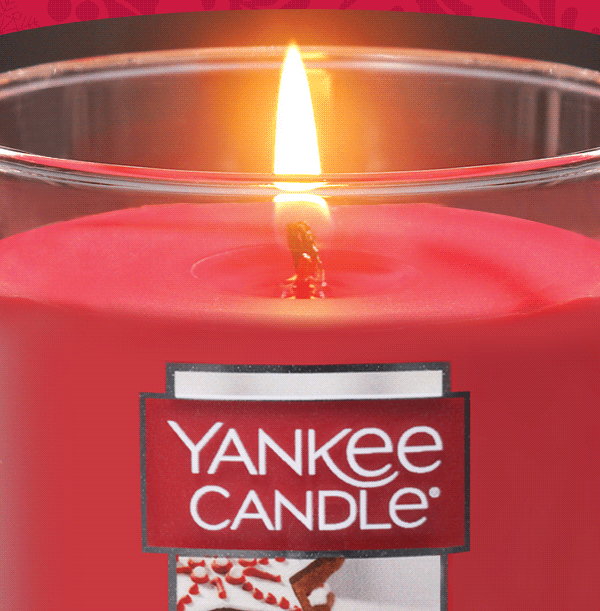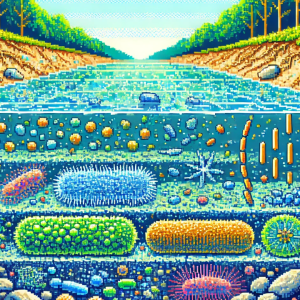
What is that Yankee Candle doing to your home?
You light a candle. It smells like fresh linen and dreams. You take a deep breath, cozy up on the couch… and inhale a cloud of ultra-fine particles and microscopic bacterial bits that could travel from your lungs into your bloodstream.
Wait—what?
Yup. That soothing scented candle might be releasing more than just vibes. A new study reveals that burning candles doesn’t just spike indoor air pollution—it reshapes the invisible microbial world floating in your living room. Spoiler alert: It’s weird, fascinating, and maybe just a little gross.
Let’s break it down.
Candles, but Make It Science
Most of us spend about 90% of our lives indoors. And while we’re inside—working, eating, binging TV—there’s a hidden cast of characters hanging out in the air with us: particles, pollutants, and yes, microbes.
Scientists already knew candles release particulate matter (PM). Think of PM as dust specks so tiny they fly under your radar—and into your lungs. The study’s researchers wanted to see just how much candles add to indoor air pollution and whether they mess with the microscopic life in the air.
So they lit scented candles in regular homes and tracked what happened.
The Big Puff
Within 5 minutes of lighting a candle, PM10 (the “bigger” particles) spiked to 1.5 times higher than the baseline.
But here’s where it gets wild: the tiny particles—PM2.5 and PM1—didn’t just hang out near the candle. They drifted across the room, staying suspended in the air long after the candle was blown out. At 6 meters (nearly 20 feet) away, the fine particle levels were still going strong 30 minutes later.
So if you think you’re safe on the other side of the room while the candle flickers peacefully… you’re not.
These particles are sneaky. They’re small enough to slip deep into your lungs, enter your bloodstream, and make their way to other organs. And unlike their chunky cousins, they don’t settle—they float.
But here’s the plot twist…
Microbes in the Mist
Beyond particles, candles also seem to stir up microbes. Specifically, two kinds:
- m-AB: Micro-sized airborne bacteria
- n-ABE: Nano-sized bacterial extracellular vesicles (EVs)—basically bacterial bubble mail carrying proteins and DNA
And here’s the kicker: These EVs are tiny enough to float around undetected and potentially interact with your immune system. Some researchers think they might influence inflammation, allergies, or even diseases.
Before candle-burning, the air had a few usual suspects—mostly harmless bacteria that live on plants and skin. But after lighting up? The air saw a bloom of new bacterial species, including one called Phyllobacterium myrsinacearum.
It wasn’t just hanging out in cell form—it was sending out EVs. Lots of them.
No one’s quite sure what this microbe’s EVs do to human health (yet), but it’s a reminder that the microbial world doesn’t just sit still. It reacts, morphs, and sometimes gets way more active when we burn stuff indoors.
Tiny Particles, Big Questions
Why does this matter?
- Health risks: Fine particles and EVs can travel deep into your lungs—and beyond. Unlike regular bacteria, EVs are stealthy and biologically active. Some are linked to asthma and chronic inflammation.
- Invisible spread: Particles traveled further the smaller they were. That means pollution isn’t just where the candle is—it’s everywhere.
- Microbial shifts: The microbial world in your living room can change from something you’d breathe on a nature walk… to something that might resemble a smoky lab experiment.
Also, fun fact: the air got more microbially diverse after burning a candle. That’s science-speak for: “You just added a bunch of new microscopic party guests to the room.”

So… Should You Never Burn a Candle Again?
Don’t panic. You don’t have to ditch candles forever and live in a bubble. But here are some easy takeaways from this study:
- Ventilation is your BFF: Crack a window. Turn on a fan. Don’t trap the candle smoke inside.
- Distance matters: Sitting right next to the candle? You’re breathing the heaviest dose. Go remote.
- Be picky with your candles: Poorly made candles can release way more pollution. Choose high-quality, clean-burning ones.
- Limit the burn time: This study only lit candles for 5 minutes. Many people burn them for hours. Maybe go easy.
And let’s be real—just because you can’t see a cloud of bacterial EVs doesn’t mean it’s not floating in the air like some invisible sci-fi creature.
Let’s Explore Together 🧪
Science is cool because it flips what we think we know. A cozy candle suddenly becomes a portal to microscopic worlds. This study cracked open the door—now it’s up to us to ask the big questions.
💬 What do you think?
- How do you see this research affecting your daily routines?
- What scented candle do you refuse to give up, no matter what?
- What’s the weirdest or coolest science fact you’ve learned recently?
Drop your thoughts in the comments or tag us on social! Let’s spark some nerdy conversation.



